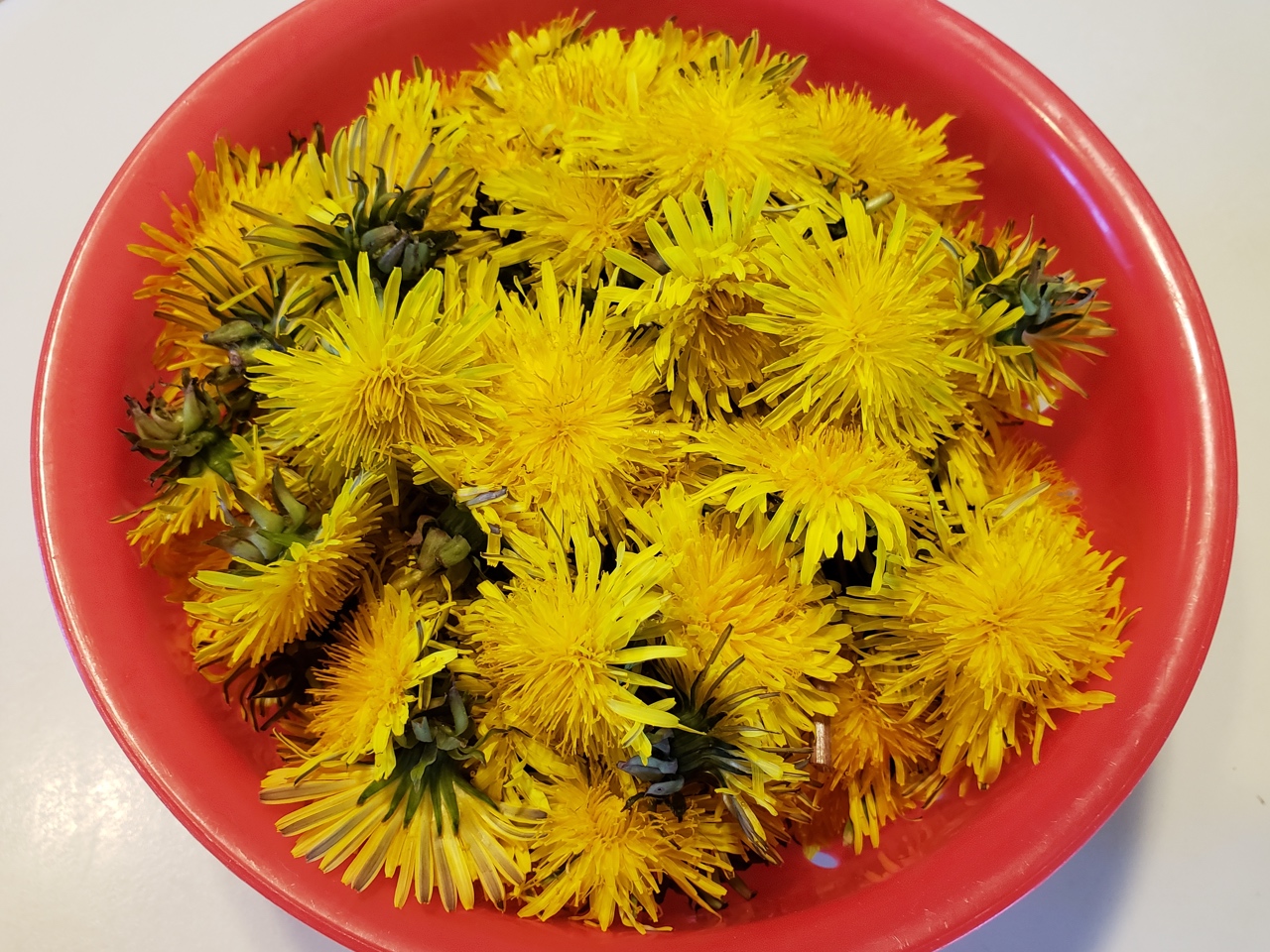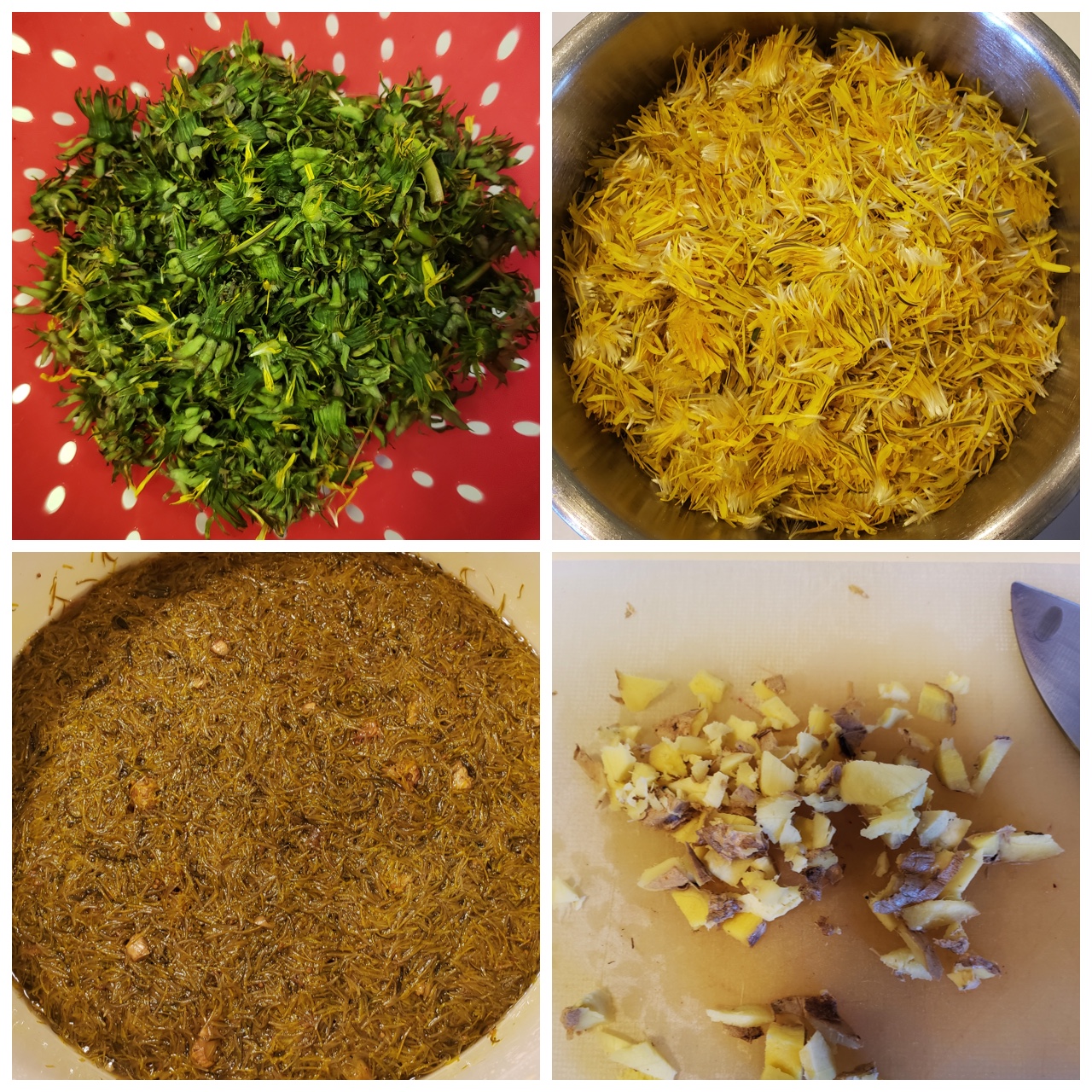
Those gorgeous golden blooms just keep coming, so I had to get out there and pick some for both a wild-fermented dandelion-ginger wine and for (truly addictive) dandelion water kefir. I’ve really come to appreciate those precocious dandelions!
For this version of dandelion wine, I used the recipe found on Pixie’s Pocket’s blog: Wild Fermented Dandelion Ginger Wine. Amber has great recipes on her site (like the Goldenrod-Ginger wine I made last year) – check it out!
I started by gathering a large bowlful of fresh dandelion blooms from our own chemical-free property; there were so many flowers smiling up at the sun that this task really only took about 10 minutes, which also provided an opportunity to look around and appreciate the flora and fauna in the area in which I was harvesting the blooms. Being out in nature is one of the most enjoyable aspects of foraging, especially when it’s a sunny day. I assured the rabbits that I had left plenty for them, as well as for the pollinators.
Now for the not-so-fun part: pulling just the petals from the blooms. This took more than a few minutes, but it’s manageable. Once all the petals had been removed, I had a full bowlful of petals, at least the 2 cups called for in the recipe. I put the 3/4 gallon of water in the stockpot to boil; once it did, I left it to cool while I attended to other tasks. I then put the petals, minced fresh ginger, a couple of chopped dried figs, and 3 cups of sugar into a fermenting bucket, poured the hot water over it, and stirred to dissolve the sugar. I covered the mixture with a large paper towel and secured it with a rubber band.

The following day, I stirred the mixture. I don’t yet see any bubbling, but am holding out hope that it will start soon. The temperatures have been warm, and the ginger skins, dandelion petals, and figs should all have brought some microbes to the mix – all should help promote fermentation. I like to use the yeasts naturally present on ingredients and in the air when possible, but have found that sometimes they’re not enough to get a really active ferment going, so wine yeast and nutrient are prudent to have on hand, just in case.
Update: wild fermentation never began, so I pitched champagne yeast plus yeast nutrient, which really only started a sluggish ferment. When racked to a carboy, the wine was still very sweet, indicating too much unused sugar remained, and lacked yeasty undertones that would be expected this early in the fermentation. Never fear – I put just a pinch of Lalvin EC-1118 in and the wine is now rocking the airlock. This wine yeast is specifically indicated for sparkling wines and champagnes and has a reputation for restarting “stuck” ferments. It definitely works!
While it was too sweet, the flavor of the wine was lovely: strong, almost honeyed floral from the fresh dandelion petals really shone through; this wine should be pretty fantastic when ready to drink. In a couple of months, I’ll move the wine to a clean carboy to get it off the yeasty sediment and will update on how it tastes then.
